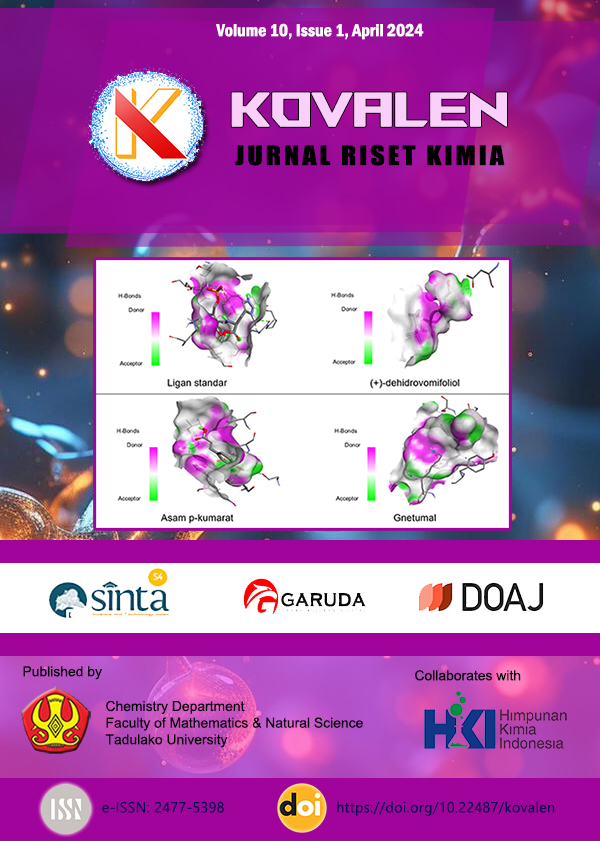Main Article Content
Abstract
Research has been carried out regarding the synthesis of Magnetite-Alginate microcapsules (MNPs-ALG) and applied to Cu (II) metal ions. The nature of magnetic nanoparticles, Fe3O4 which easily form aggregations can be overcome by this encapsulation process, but a very efficient separation process is also very much needed in the analytical separation process.The process of making magnetite nanoparticle compounds is carried out first using FeCl2.4H2O and FeCl3.6H2O and adding concentrated ammonia at a temperature of 90οC until the solution becomes blackish in color. The dry magnetite, Fe3O4, nanoparticles were then dissolved in distilled water and thickened with Na-Alginate then dropped slowly into a 1 M CaCl2 solution. The results of characterization using SEM showed that there were differences in morphology before and after contact, and there was 0.98% mass of Cu elements on the EDS results.The microcapsule adsorption optimization test gave results for the best adsorption percentage >90% on a mass variation of magnetite (MNPs) of 0.3 grams; pH 5; contact time of 30 minutes and retention capacity of 185.95 mg/gram, at a Cu(II) concentration of 800 ppm. Analytical performance shows the best results with linearity parameters with a correlation coefficient of 0.999; the detection limit and quantitation limit are 0.0516 ppb and 0.1720 ppb with a lifetime of four times. The application of samples in the form of river water samples shows a percent recovery value of around >90%, indicating that there is no matrix that significantly influences the measurements.

